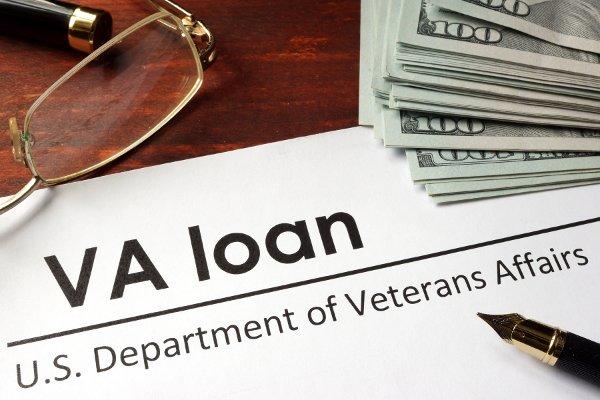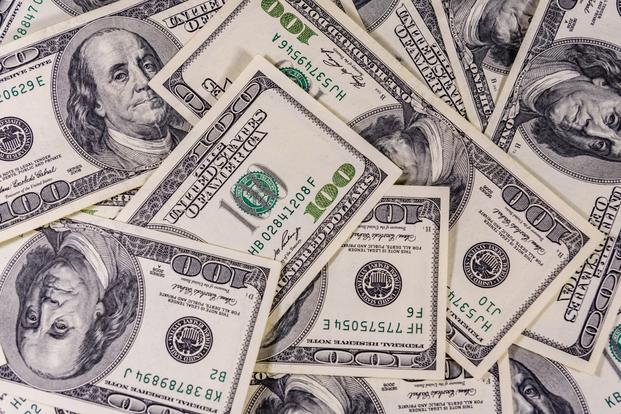Your VA Loan Benefits Explained
One of the most significant benefits of military service is the VA home loan, which can help you purchase a home with no down payment or refinance an existing loan. This gives you the opportunity to get a mortgage with a competitive interest rate as well as a lower cost at closing without prepayment penalty. With all these benefits, you have the potential to purchase a more expensive home than you might otherwise have been able to afford.
The VA does not give you the actual loan for your home; rather, they simply guarantee a loan made to you by private lenders (such as banks, savings and loans, or mortgage companies). If a home loan is approved by your lender, VA will guarantee a portion of the loan to the lender.

What Is the Most I Can Borrow Using My VA Home Loan?
There is no maximum loan amount; however, lenders may limit the amount they will loan you based on your personal creditworthiness. If you make a down payment your lender may loan a larger amount. While not a down payment, the guarantee often satisfies the lenders’ requirement that a portion of the home price be paid for up front (i.e., the down payment). This can save the home buyer the burden of making a down payment. The loan maximum itself may be up to 100% of the VA appraised property value. In addition, certain funding fees and closing costs apply, and you must be able to pay a portion of these fees up front. Generally, these fees range from 1.4% to 3.6% of the total loan amount.
Am I Eligible for a VA Home Loan?
The major eligibility categories for a VA home loan include:
- Veterans and service persons who have served 181 active-duty days during peacetime, unless discharged or separated from a previous qualifying period of active duty service
- Veterans who served during World War II, Korea, or Vietnam, if they served for 90 days and were honorably discharged
- If you have served for any period since Aug. 2, 1990, you can also qualify if you have served 24 months of continuous active duty, or the full period (at least 90 days) that you were called to active duty
- Those who have completed a total of six years in the Selected Reserve or National Guard
- An un-remarried spouse of a veteran who died while in service or from a service-connected disability or a spouse of a service member missing in action or a prisoner of war. (Note: A surviving spouse who remarries on or after attaining age 57, and on or after December 16, 2003, may also be eligible for the home loan benefit.)
Read more in our VA loan eligibility section.

How Do I Apply for my VA Home Loan?
Want to apply for a VA home loan? There are four basic actions items.
Before anything else, you'll need to find a lender or lending institution that provides VA home loans - our VA Loan finder will match you with rate quotes from up to five lenders. At this stage, you should also gather the documents you’ll need when applying for the loan.
After you get a purchase agreement for your new home you'll need to ask the VA for a property inspection or appraisal. Once that is done, you'll need to submit a VA home loan application. Make sure you have your Certificate of Eligibility.
Finally, when the loan is approved, you can move forward with closing on your new home.
How Do I Use my VA Home Loan Benefit?
1. Find a Home
Find a home and discuss the purchase with the seller or selling agent. Sign a purchase contract conditioned on approval of your VA home loan.
2. Select a Lender for Your VA Loan
A lender can help you review your financial situation and credit history and determine the loan amount you qualify for. Choose a lending institution that is VA approved and can handle home loans. Connect with a lender now to get a rate quote.
3. Submit the Application
The lender will process the required loan documentation and develop all credit and income information. They will also request VA to assign a licensed appraiser to determine the reasonable value for the property. A Certificate of Reasonable Value will be issued. NOTE: You may be required to pay for the credit report and appraisal unless the seller agrees to pay.
4. Loan Approval, Funding, and Closing
The lender will let you know the decision on the loan. You should be approved if the established value and your credit and income are acceptable. You (and spouse) attend the loan closing. The lender or closing attorney will explain the loan terms and requirements as well as where and how to make the monthly payments. Sign the note, mortgage, and other related papers. To finalize your transaction you need these legal binding documents:
- Promissory note indicating amount borrowed, interest rate charged, and terms of repayment
- Deed of Trust placing the property as security against the loan and note
- Closing Disclosure (CD) form (pages 1 and 2) itemizing all fees incurred for obtaining the loan
Once your loan documents have been prepared, signed, and returned, the funding process begins. After a final check of all signed documents is completed, the lender funds the loan. Usually through an electronic wire transfer, the money you borrowed is given to the escrow or closing attorney for disbursement.
The last step is the issuance of your Closing Disclosure (CD), which often takes place on the same day as the recording of your loan. The recording is considered the true closing of the loan. By law, a VA loan user must pay a funding fee (usually around 2% of the loan), but VA can lower this fee if the borrower makes a down payment of at least 5%. You may also be exempt from this fee if you fall under one of these categories:
- You receive VA compensation for service-connected disabilities.
- You are a veteran who would be entitled to receive compensation for service-connected disabilities if you did not receive retirement pay.
- You are a surviving spouse of a veteran who died in service or from service-connected disabilities.
VA Loan Documents Checklist
VA ELIGIBILITY INFORMATION
- Certificate of Eligibility: Obtain VA Form 26 1880, Request for a Certificate of Eligibility for VA Home Loan Benefits
SAVINGS AND FINANCIAL INFORMATION
- Complete bank statements from the most recent three months for all accounts
- Most statements from retirement, 401k, mutual funds, money market, stocks, bonds, and inheritances
- If applicable: copies of spouse’s financial accounts and phone numbers
CREDIT INFORMATION
- Latest credit card statements, indicating minimum payments and account numbers
- Name, address, and phone number of your landlord, or 12 months of cancelled rent checks
- If applicable: if you have no credit cards, copies of your most recent utility bills If applicable: copy of complete bankruptcy and discharge papers
- If applicable: if you co-signed for a mortgage, car, credit card, etc., copies of 12 months’ cancelled checks, front and back, indicating you are not making payments
- If applicable: copies of spouse’s credit card accounts
PERSONAL INFORMATION
- Copy of driver’s license
- Copy of Social Security card
- If applicable: copies of complete divorce, palimony, or alimony papers
- If applicable: copy of green card or work permit
- If You Are Refinancing or Own Rental Property
- Copy of note and deed from current loan
- Copy of property tax bill
- Copy of hazard (homeowners) insurance policy
- Copy of payment coupon for current mortgage
- If applicable: If property is multi-unit, you need copies of rental agreements. Upon review of your file on a case-by-case basis, additional documents may be requested.
How Do I Refinance Using My VA Home Loan?
You can use your VA home loan benefit to refinance your existing VA home loan to a lower interest rate, with little or no out-of-pocket cost. This is called an Interest Rate Reduction Refinancing Loan (IRRRL), also known as a “rapid refinance” or a “streamline refinance.”
Generally, no appraisal, credit information, or underwriting is required for this refinancing option, although some lenders may require an appraisal and credit report. The fees and charges associated with the refinancing loan may be incorporated into the new VA loan. Remember: The interest rate on the new loan must be lower than the rate on the old loan (unless you refinance an adjustable rate mortgage to a fixed-rate mortgage).
To receive an IRRRL, work with your lender to process your application. It’s generally a good idea to compare several lenders’ rates first, as there may be large differences in the terms they offer. Also, some lenders may contact you suggesting that they are the only lenders with the authority to make IRRRLs, but according to VA, any lender can make you an IRRRL.
An IRRRL can be done only if you have already used your eligibility for a VA loan on the property you intend to refinance. If you have your Certificate of Eligibility, take it to the lender to show your prior use of the entitlement.
The occupancy requirement for an IRRRL is different from that for other VA loans. When you originally got your VA loan, you certified that you occupied or intended to occupy the home. For an IRRRL, you need only certify that you previously occupied it.
The loan may not exceed the sum of the outstanding balance on the existing VA loan, plus allowable fees and closing costs, including the funding fee.
What’s the Cash-Out Refinance Option?
The Veterans’ Benefits Improvement Act of 2008 allows you to free up cash with a cash-out refinance, a VA home loan refinance program in which you can cash out on the equity you have built up in your home. As an example, if you still owe $70,000 on your original loan, you can refinance for a $90,000 loan, which gives you a cash-out of $20,000.
An appraisal is required and you must qualify for the loan. If you are refinancing for the first time, VA charges a 2.3% funding fee for this program (2.3% of the total loan) which can be rolled into the loan amount. If you refinance more than once, the funding fee is 3.6%.
There is no minimum amount of time that you must own your home, yet your home must have sufficient equity to qualify for VA refinancing. Existing loans can be refinanced whether they are in a current or delinquent status, but refinancing loans are subject to the same income and credit requirements as regular home loans. As long as you have title to the property you can refinance an assumed loan. Check with your lender as there are some additional regulations concerning assumed loans.
We have a complete guide to Cash Out Refinancing available here.
Conventional Home Loan to VA Refinance
If you do not have a VA home loan but are eligible for one, you can refinance a subprime or conventional mortgage for up to 100% of the value of the property. Usually you will be charged a funding fee if you are using your VA loan guarantee for the first time. Benefits to this type of refinancing are that your new interest rate may be lower and you will have no monthly mortgage insurance or out-of-pocket closing
costs.
Can I Reuse My VA Home Loan Benefit?
The VA home loan benefit can be reused if you have paid off your prior VA loan and sold the property. In addition you may, on a one-time-only basis, be able to reuse or restore your benefit eligibility if your prior VA loan has been paid in full and you still own the property.
In either case, to restore your eligibility, you must send a completed VA Form 26-1880 to your VA Eligibility Center.
To prevent delays in processing, you should also include evidence that the prior loan has been paid in full and, if applicable, the property disposed of. This evidence can be presented in the form of a paid-in-full statement from the former lender, or a copy of the Closing Disclosure (CD) settlement statement completed in connection with a sale of the property or refinance of the prior loan. Depending on the circumstances, if you have already used a portion of your VA-guaranteed amount, and the used portion cannot be restored, any remaining portion of your VA guarantee is available for use on another loan.
You will have to ask your lender if your remaining VA-guaranteed portion will be enough, or if you will need to make a down payment to qualify for the loan. If you have a question about your specific case, contact VA.
